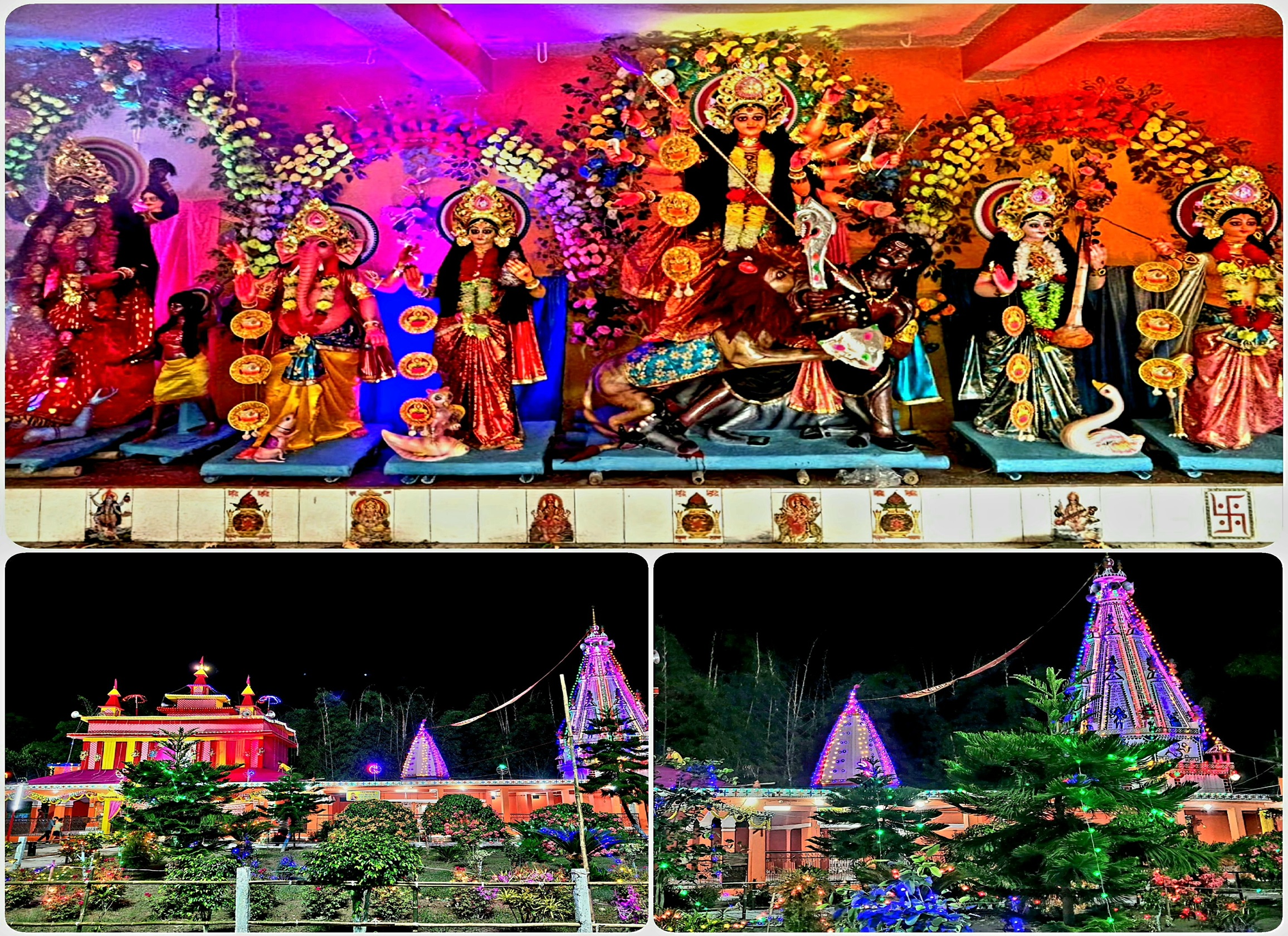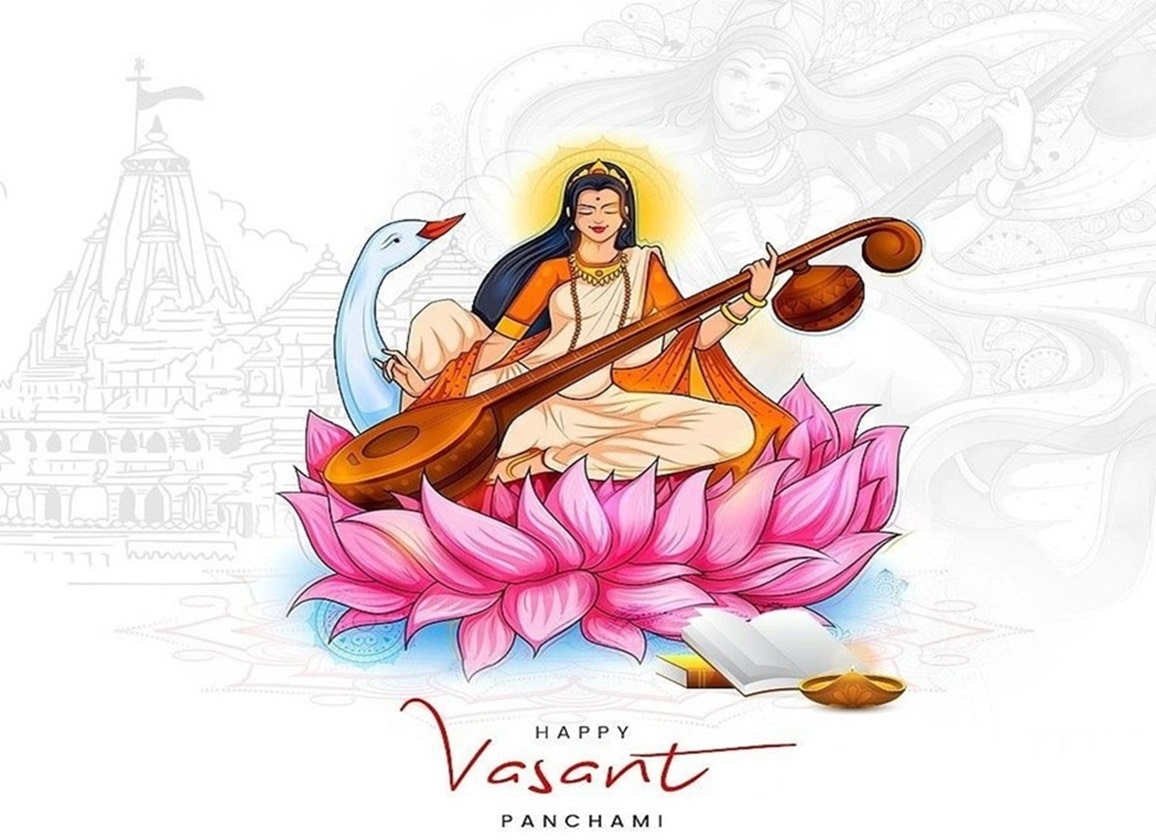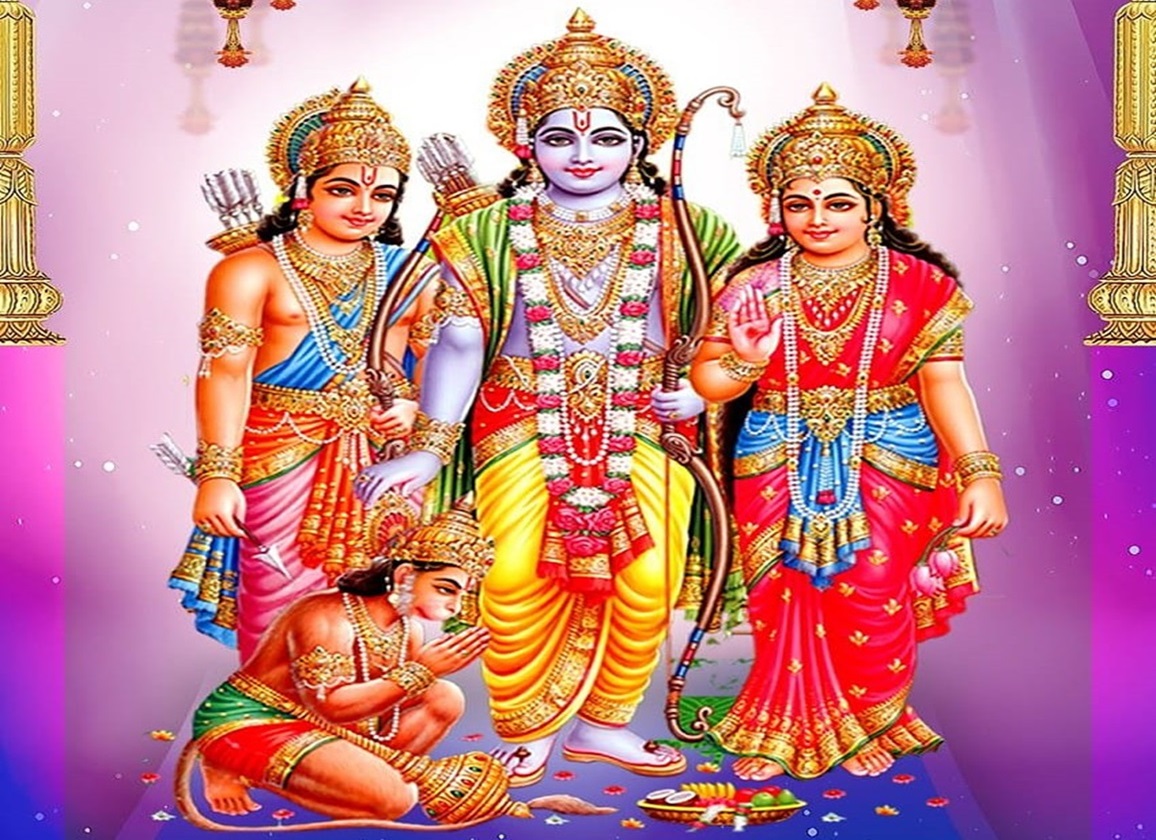


Goddess: Durga
Month (Hindu Calendar): Ashwin (September-October)
Durga Puja is celebrated for 10 days, starting with Kalasthapan, where a sacred pot is placed to invoke the goddess. Each day represents one of the nine forms of Goddess Durga, starting with Shailputri and ending with Siddhidatri on the ninth day. On Ashtami or Navmi, we perform the sacred ritual of Bali Pradan, offering sacrifices to Lord Kali and Goddess Durga. The festival symbolizes the victory of good over evil, commemorating Durga's triumph over the demon Mahishasura. The entire village comes together in joy and devotion, with grand feasts, prayers, and cultural performances. It’s a time of spiritual reflection and community bonding, and the atmosphere is charged with reverence and festivity.

Goddess: Saraswati
Month (Hindu Calendar): Magha (January-February)
Saraswati Puja or Basant Panchmi is celebrated during the auspicious month of Magha, and it is a day dedicated to the goddess of knowledge, wisdom, and learning, Saraswati. The temple is beautifully decorated, and devotees bring their books and instruments to seek the goddess' blessings for intellect and skill. The idol of Goddess Saraswati is placed on a lotus, and she is adorned in white, symbolizing purity. The festival is a special occasion for students and scholars who perform Pran Pratishtha followed by Puja. Next day, the Saraswati Visarjan ceremony is held where the idol is immersed in water. The community gathers with joy to pray for knowledge and peace, making this festival a celebration of learning and wisdom.

God: Ram
Month (Hindu Calendar): Chaitra (March-April)
Ram Navmi is a celebration of the birth of Lord Ram, the seventh incarnation of Lord Vishnu. The festival falls on the ninth day of the month of Chaitra and is marked with special Bhajans and Kirtans. Devotees fast on this day, observing a strict spiritual routine. In the temple, we recite the Ramayana and perform a ceremonial Abhishek (ritual bath) to the idol of Lord Ram. The highlight of the celebration is the depiction of scenes from Lord Ram's life, including his birth in Ayodhya. Devotees visit the temple in large numbers, offering fruits, sweets, and flowers, and seeking blessings for peace and prosperity in their lives. The festival also symbolizes righteousness and victory over evil, with an emphasis on living by the values of Lord Ram.

God: Shiv
Month (Hindu Calendar): Phalguna (February-March)
Mahashivratri, the 'Great Night of Shiva', is one of the most important festivals dedicated to Lord Shiva. It is celebrated on the 14th night of the dark fortnight in Phalguna. Devotees fast throughout the day and night, offering Bilva leaves, milk, honey, and other sacred items to the Shivalingam. Throughout the night, we perform special prayers, chanting Om Namah Shivaya and singing hymns in praise of Lord Shiva. The entire temple is illuminated with lights, and the atmosphere is filled with devotion and peace. This night signifies overcoming darkness and ignorance in life and the world. The festival is observed with immense joy, where devotees seek blessings for strength and enlightenment. It is believed that sincere prayers on this day bring peace and prosperity.